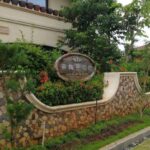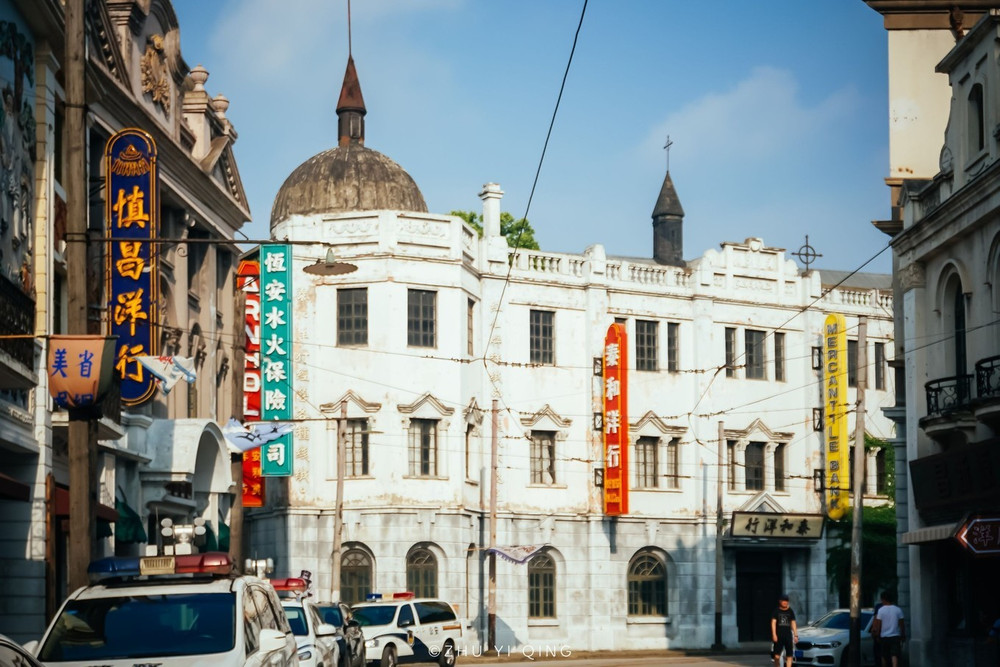Shanghai Wenmiao, originally established during the Yuan Dynasty (1294), has been relocated several times before settling at its current location. The structure visible today was built in the fifth year of the Xianfeng Emperor’s reign (1855) during the Qing Dynasty. This site boasts a blend of grand Ming and Qing architectural styles and the serene ambiance of a Jiangnan garden, featuring exhibitions of exotic stones, root carvings, and teapots, as well as displays of ancient Shanghai literary inscriptions.
The temple complex is laid out in a three-part courtyard design, with the first part divided into upper and lower courtyards, the second part featuring the Lingxing Gate, and the ends of the courtyard adorned with Kuiwen Pavilion and Zun Jing Pavilion. The third part consists of a quadrangle formed by the Dacheng Gate, Dacheng Hall, and two drum towers. To the left and right of Dacheng Hall are the Eastern and Western Wings, enclosing a sealed courtyard with the Dacheng Gate and walls, housing exhibitions of Ming and Qing couplet steles. In front of Dacheng Hall stands a statue of Confucius and the Dacheng Bell, where many students visit to make wishes and ring the bell before exams, tying red ribbons on the trees in front of the hall for good luck. Dacheng Hall, the main hall for worshipping Confucius, displays the complete text of the ‘Analects’ written in regular script by Shanghai calligrapher Liu Xiaoqing, inscribed on 52 bluestone slabs and embedded around the inner walls of the hall, showcasing exquisite craftsmanship. Moving eastward, one arrives at Zun Jing Pavilion, originally built during the Ming Dynasty’s Chenghua period, and one of Shanghai’s earliest official libraries. In front of the pavilion stands a Lingbi stone resembling a qilin. To the south of Zun Jing Pavilion is the Minglun Hall, once a venue for Confucian scholars to lecture, where neatly arranged study cases can be seen. In front of the hall is a bronze square ding with inscriptions reading ‘Learn extensively from the arts, and be restrained by rites’ and ‘Never tire of learning, and never weary of teaching.’ At the eastern end of Wenmiao stands a three-story Kuixing Pavilion, built in 1855, and a principal structure of the academy. This rare pavilion relic in downtown Shanghai features flying eaves and a pointed roof, exuding a strong sense of history. It is said that in the past, one could overlook the entirety of the old Shanghai city from this pavilion. In front of the pavilion is a pond surrounded by lush vegetation, resembling a miniature garden, with a ‘Dragon Roar Tiger Howl’ Lingbi stone standing in the pond, very vivid. Surrounding Wenmiao, along Laodaoqian Street, Menghua Street, and Xuegong Street, are antique shops, calligraphy and painting studios, ancient coin, and stamp stores with a rich cultural flair. Occasionally, elderly people set up stalls selling antiques. The area also boasts numerous street snacks, doll shops, stationery stores, and small goods shops, making it a popular destination for students and young people. Notably, there is a book market in the northeast corner of Wenmiao, offering discounted books. Every Sunday, there is a second-hand book market within Wenmiao (closed on rainy days), where for a small fee, one can find a variety of books, including antique books, second-hand books, new books, comics, and foreign books. With patience, one is sure to find something of interest, making it a must-visit for book lovers. The entire site is open year-round from 09:00 to 16:30, with the Zhou Huikun Calligraphy Art Museum closed on Mondays.The specific business status is subject to the opening situation on that day.









